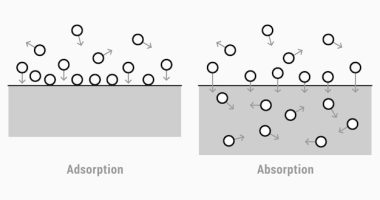**Introduction**
Understanding the complex interactions between long non-coding RNAs (lncRNAs) and nuclear receptor (NR) signaling pathways, specifically their roles in cancer, has become a crucial area of study. In this comprehensive review, authors Prabha Tiwari and Lokesh P Tripathi explore the intricate dance between lncRNAs and NRs, identifying how these interactions contribute to the regulation of gene expression, cellular development, and oncogenesis. As promising biological entities, lncRNAs and NRs modulate a range of cellular mechanisms that can affect cancer progression and patient outcomes. This paper delves into the specific interactions known as lncRNA nuclear receptor cancer interactions, examining how these relationships influence cancer biology, from initiation through metastasis. It highlights significant lncRNAs and their regulatory roles tied to NRs such as androgen receptors, which are pivotal in various cancer types, with a particular focus on prostate, breast, and ovarian cancers. The review not only maps out the current landscape of research but also addresses the challenges and emerging methodologies that could potentially enhance our understanding and lead to innovative therapeutic strategies. Through this exploration, Tiwari and Tripathi aim to underscore the therapeutic potential of targeting lncRNA-NR axes, promising a new frontier in cancer treatment paradigms.
**Background and Context**
In the realm of molecular biology, the discovery of long non-coding RNAs (lncRNAs) has dramatically transformed our understanding of genomic and epigenomic landscapes. Unlike their coding RNA counterparts, lncRNAs do not encode proteins but instead play critical roles in regulating gene expression at various levels, including chromatin remodeling, transcription, and post-transcriptional processing. Among the myriad pathways influenced by lncRNAs, their interaction with nuclear receptors (NRs) has emerged as a particularly important mechanism, particularly in the context of cancer biology. The interaction dynamics between lncRNAs and NRs—referred to as lncRNA nuclear receptor cancer interactions—offer unique insights into the regulatory networks that could potentially be exploited for therapeutic benefits.
Nuclear receptors are a class of proteins found within the cells of animal species that are responsible for sensing steroid and thyroid hormones and certain other molecules. In response to these signals, NRs regulate the expression of specific genes, influencing a myriad of biological processes including development, metabolism, and cellular proliferation and differentiation. This regulatory capability extends to cancer, where NRs can influence tumor growth, hormonal responsiveness, and cancer cell metabolism.
Research into lncRNA nuclear receptor cancer interactions has uncovered that lncRNAs can modulate NR activity through various mechanisms. Some lncRNAs function as coactivators or corepressors of NRs, adjusting the transcriptional output of NR-target genes. Others may bind directly to NRs, affecting their stability, localization, or interaction with other regulatory proteins. These interactions can have profound implications for cancer, modulating the responsiveness of cancer cells to hormonal therapies, influencing the cancer transcriptome, and ultimately affecting patient outcomes.
The significance of studying lncRNA nuclear receptor cancer interactions extends beyond basic biology, offering practical avenues for clinical intervention. In cancers like prostate, breast, and ovarian tumors, NRs such as the androgen and estrogen receptors play pivotal roles in disease progression. The lncRNAs that interact with these NRs provide an additional layer of regulatory control that could be manipulated to suppress tumor growth or resensitize resistant tumors to standard therapies.
Moreover, the study of these interactions has highlighted a critical challenge: the sheer diversity and complexity of lncRNAs. With thousands of lncRNAs identified, each potentially interacting with multiple NRs through diverse mechanisms, the task of mapping these interactions is daunting. Additionally, the context-dependent nature of these interactions, where the impact of a lncRNA-NR interaction can vary based on the type of cell or the presence of other molecular signals, adds another layer of complexity.
Despite these challenges, advances in molecular biology techniques, such as CRISPR/Cas9-mediated genome editing, RNA sequencing, and bioinformatic tools, have begun to elucidate the roles of specific lncRNAs in NR-mediated pathways. These emerging methodologies not only enhance our understanding of lncRNA nuclear receptor cancer interactions but also pave the way for the development of novel therapeutic strategies that could target these complex molecular interplays. By focusing on the mechanistic underpinnings and clinical implications of these interactions, researchers like Tiwari and Tripathi aim to unlock new therapeutic paradigms in the fight against cancer.
**Methodology**
To unravel the intricate roles of lncRNA nuclear receptor cancer interactions in various cancers, researchers Prabha Tiwari and Lokesh P Tripathi employed a multidisciplinary approach, encompassing both experimental and computational methodologies. This robust strategy aimed to delve deeply into the molecular mechanisms underlying these interactions and evaluate their potential as therapeutic targets.
**Experimental Approaches**
The initial phase involved the identification of lncRNAs associated with nuclear receptors in prostate, breast, and ovarian cancer cells. To accomplish this, the research team utilized RNA-sequencing (RNA-seq) to profile the expression of lncRNAs in cancer cell lines treated with and without nuclear receptor ligands. This high-throughput technique enabled the identification of lncRNAs whose expression levels were modulated in response to NR activity.
Following the discovery phase, the researchers validated these findings through quantitative real-time PCR (qRT-PCR) to measure the expression levels of select lncRNAs in different cancer cell lines under varied experimental conditions. These data clarified the specific lncRNA nuclear receptor cancer interactions, highlighting potential lncRNAs that might participate in the regulation of NR-mediated transcription.
To explore the functional roles of these lncRNAs, CRISPR/Cas9 genome editing was employed to knock out specific lncRNA genes in cancer cells. Subsequent assays—including cell proliferation, migration, and invasion assays—were conducted to observe changes in cancer cell behavior that suggest lncRNA involvement in cancer progression and metastasis.
**Computational Approaches**
In parallel with laboratory experiments, bioinformatic analyses played a crucial role in understanding the lncRNA nuclear receptor cancer interactions. Computational models were developed to predict the structural configurations of lncRNAs and their possible interaction sites with NRs. Molecular docking simulations provided insights into the physical interactions between lncRNAs and nuclear receptors, identifying potential domains of interaction that could influence NR stability and localization.
Network analysis was another pivotal tool used to map the interactions between lncRNAs, NRs, and other regulatory molecules involved in cancer signaling pathways. These networks helped elucidate the broader regulatory landscape, identifying key nodes and links that might be targeted therapeutically.
**Integrative Data Analysis**
To further refine their findings, Tiwari and Tripathi integrated the experimental and computational data using advanced data integration techniques. This integrative analysis helped in establishing the direct and indirect effects of lncRNA nuclear receptor cancer interactions on gene expression patterns and cancer phenotype. Statistical tools were used to corroborate the significance of observed changes, ensuring that the identified lncRNA-NR interactions were indeed relevant to cancer biology.
**Conclusion**
This comprehensive methodology, blending both experimental and computational techniques, not only provided a deeper understanding of lncRNA nuclear receptor cancer interactions but also opened avenues for the development of novel therapeutic interventions based on these molecular interactions. By delineating how specific lncRNAs influence NR function and cancer progression, Tiwari and Tripathi’s approach holds promise for paving the way towards precision medicine in oncology.
**Key Findings and Results**
The research conducted by Prabha Tiwari and Lokesh P Tripathi on lncRNA nuclear receptor cancer interactions has yielded significant insights into the regulatory roles of lncRNAs in association with nuclear receptors in cancer biology. Their findings illuminate the complex interplay between these molecules and provide a promising basis for therapeutic advancements in cancers like prostate, breast, and ovarian cancers, where nuclear receptors play essential roles.
One of the pivotal discoveries made by Tiwari and Tripathi was the identification of specific lncRNAs whose expressions were significantly altered in response to nuclear receptor ligands in prostate, breast, and ovarian cancer cell lines. This suggests that these lncRNAs may act either as coactivators or corepressors in the NR signaling pathways. Notably, through the use of CRISPR/Cas9 mediated knockouts of selected lncRNAs in cancer cell models, it was observed that the deletion of certain lncRNAs led to marked changes in cell proliferation, migration, and invasion, underscoring their potential roles in cancer progression and metastasis.
Further, the computational analyses and molecular docking simulations revealed that certain lncRNAs have potential binding sites that are congruent with NR domains. This suggests a direct interaction mechanism where lncRNAs could influence the stability and activity of nuclear receptors, thereby modulating the transcriptional regulation carried out by these receptors. These interactions were particularly evident in the context of androgen and estrogen receptors, critical in prostate and breast cancer biology respectively.
Network analysis added another layer of understanding by delineating the interaction networks involving lncRNAs, NRs, and other key regulatory molecules. This helped in identifying several lncRNA-NR axes that act as hubs in regulatory networks, indicating their potential as therapeutic targets. These hubs represent points of convergence where regulatory signals from multiple pathways are integrated, thus controlling key aspects of cancer biology such as cellular proliferation, apoptosis, and hormone response.
One of the most clinically relevant outcomes of this research into lncRNA nuclear receptor cancer interactions is the potential for developing new therapeutic strategies. For instance, lncRNAs that modulate the activity of hormone receptors could be targeted to overcome resistance to existing hormone therapies in prostate and breast cancers. The study also suggests that manipulating lncRNA expression or function could resensitize tumors to treatments from which they had previously developed resistance.
Ultimately, these findings underscore the complexity and significance of lncRNA nuclear receptor cancer interactions within the cancer microenvironment. By mapping these interactions and understanding their implications for cancer biology, Tiwari and Tripathi have opened new avenues for potential therapeutic interventions. These interventions could specifically target the regulatory interactions between lncRNAs and nuclear receptors, paving the way for more precise and effective cancer therapies in the future. The potential to manipulate these interactions offers hope for improving patient outcomes by developing drugs that can more accurately target the molecular underpinnings of cancer.
**Future Directions and Final Thoughts**
As we gain deeper insights into lncRNA nuclear receptor cancer interactions, it becomes clear that this area holds substantial promise for the future of cancer therapy. The innovative research by Prabha Tiwari and Lokesh P Tripathi opens new vistas that could lead to breakthroughs in personalized medicine for cancer treatment, particularly in leveraging these interactions for therapeutic advancements.
However, several challenges and questions remain that need robust exploration in future studies. A critical area involves enhancing the specificity and efficacy of targeting lncRNAs within the complex milieu of the cellular environment. Since lncRNAs often have multiple targets and effects within and outside of the cell nucleus, designing therapies that can selectively modify lncRNA activity without off-target effects remains a significant challenge.
Further research should focus on not only understanding the basic mechanisms of lncRNA nuclear receptor cancer interactions but also on clinical trials that could implement these findings. Investigating non-invasive methods of delivering these targeted therapies, such as nanoparticle-based delivery systems, could also be pivotal in translating laboratory research into viable clinical applications. Additionally, since the expression and roles of lncRNAs may vary between individuals and across different types of cancers, a personalized approach to targeting these RNAs will be essential. Studying the genetic and epigenetic variations influencing the expression and function of lncRNAs in various populations could help tailor treatments more effectively, adhering to the principles of personalized medicine.
Moreover, the integration of emerging technologies such as single-cell sequencing and advanced bioinformatics tools will further refine our understanding of how lncRNAs interact with nuclear receptors at the individual cell level within the tumor microenvironment. These technologies promise to uncover new layers of regulatory complexity and pinpoint therapeutic targets with unprecedented precision.
Interdisciplinary collaborations extending beyond the fields of molecular biology and oncology, incorporating computational biology, pharmacology, and clinical research, will be crucial. These collaborations can drive forward the translational research needed to bring lncRNA-targeted therapies from bench to bedside.
In the context of advancing these studies, patient-derived xenografts and organoid cultures offer valuable models for validating the functional roles of lncRNAs in an environment that closely mimics human tumor biology. These models can provide a more accurate assessment of how manipulating lncRNA nuclear receptor cancer interactions might affect tumor growth and therapy resistance in realistic clinical scenarios.
Conclusively, the research landscape is ripe for exploration, and with continued investment and interest, the profound complexity of lncRNA nuclear receptor cancer interactions could be decoded to unlock potent new treatments. As this field evolves, it will not only enhance our comprehension of cancer biology but also fundamentally shift the paradigms of cancer treatment, offering hope for more effective and individualized therapies. By understanding and manipulating the delicate dance of lncRNAs within nuclear receptor pathways, researchers stand on the brink of pioneering regimens that could significantly improve outcomes for cancer patients worldwide.









